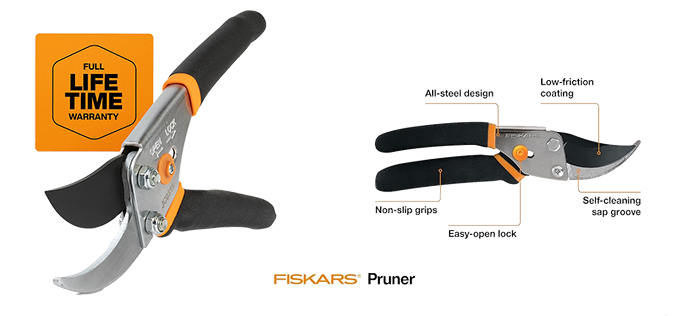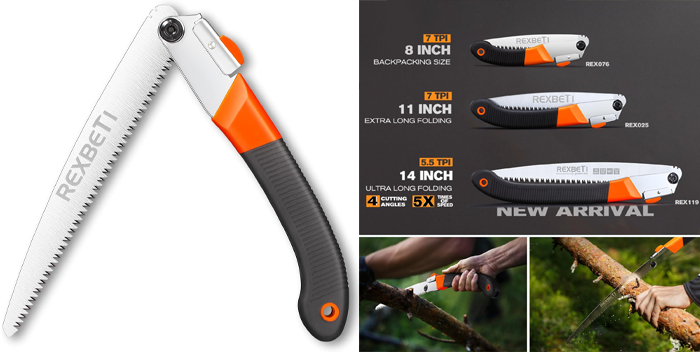Welcome to our comprehensive guide on pruning and trimming, essential tasks for maintaining a healthy and flourishing garden. At [brand name], we understand the importance of proper garden care to promote growth, improve plant health, and enhance the overall beauty of your outdoor space. In this article, we will explore the basics of pruning and trimming and provide expert tips and techniques for effective and safe practices.
A pair of pruning shears cutting away dead branches from a tree in a well-manicured garden. The sun sets behind the tree, casting long shadows on the ground. The gardener’s hand is steady as they carefully trim away the overgrowth, revealing the tree’s beautiful natural shape. In the background, other garden tools are scattered about, indicating a dedication to proper garden care.
Pruning is a vital part of garden care as it helps shape plants, control their size, and maximize their potential. By understanding the purpose of pruning and knowing when and how to prune, you can achieve optimal results and ensure the long-term health of your plants.
Stay tuned as we delve into the importance of pruning in garden care, the best times to prune, and the tools and techniques for efficient pruning. Let’s get started on transforming your garden into a thriving oasis of beauty and vitality!
Table of Contents
The Importance of Pruning and Trimming in Garden Care
Pruning plays a vital role in garden care as it promotes growth, improves plant health, and helps shape the plants according to desired aesthetics. When we prune, we trigger a plant’s natural response to develop new foliage and branching, leading to healthier and more productive growth. Pruning also allows us to control the size and shape of plants and maximize their potential. By understanding the importance of pruning, we can effectively care for our gardens and achieve desired outcomes.
Regular pruning not only improves the appearance of plants but also boosts their overall health and well-being. It removes diseased, dead, or damaged branches, minimizing the risk of fungal infections and pest infestations. Pruning also promotes air circulation and sunlight penetration, reducing the likelihood of mold or mildew. Additionally, by selectively removing branches, we encourage the plant’s energy to focus on developing stronger and healthier stems and leaves.
“Pruning is an essential aspect of garden care, and neglecting it can lead to stunted growth, poor flowering, and overall decline of plants. By pruning regularly and correctly, we can maintain the health and vitality of our garden.”
When pruning, it is important to consider the specific needs of each plant. Some plants require a light trim to encourage bushier growth, while others benefit from hard pruning to rejuvenate and stimulate new growth. By understanding the pruning requirements of different plant species, we can tailor our approach accordingly and ensure optimal results.
Pruning is not a one-time task; it is an ongoing process that needs to be incorporated into regular garden care routines. By establishing a pruning schedule based on the specific needs of each plant, we can maintain their health and appearance throughout the year. Regular pruning also helps prevent plants from becoming overgrown or unruly, making them more manageable and aesthetically pleasing.
Suitable Pruning and Trimming Techniques
- Thinning: Removing excess branches to improve airflow and light penetration.
- Heading back: Cutting back the tips of branches to encourage bushier growth.
- Deadheading: Removing faded flowers to promote continuous blooming.
- Reduction pruning: reducing the size of a plant to maintain a desirable shape or control growth.
By employing these pruning techniques, we can shape our plants, control their growth, and promote overall plant health.
When and How to Prune for Optimal Results
Knowing when and how to Pruning and Trimming is crucial for achieving optimal results in garden care. The timing of pruning largely depends on the type of plant, and following the appropriate techniques is key to promoting healthy and productive growth.
When to prune:
- Flowering shrubs: Prune right after flowering to maintain their shape and promote blooming.
- Deciduous and evergreen trees and shrubs: Late winter or early spring is the ideal time for pruning, as plants are dormant, allowing them to heal quickly.
- Fruit trees: Prune during late winter to early spring, before new growth begins. This timing ensures the best balance between fruit production and overall plant health.
- Roses: Prune roses in early spring, before new growth emerges. Removing dead or weak canes and shaping the plant helps improve air circulation and encourages healthy flowering.
How to prune:
Understanding proper pruning methods is essential for achieving optimal results:
- The three-cut method: This technique is used to avoid damaging the plant while pruning larger branches. It involves making three cuts to remove the branch without causing bark tearing or splintering.
- Removal of dead or diseased wood: Regularly inspect your plants and prune any dead or diseased branches to prevent the spread of disease and promote overall plant health.
- Maintaining plant’s natural form: Prune in a way that preserves the natural shape and growth habit of the plant. Avoid excessive pruning, as it can stress the plant and hinder its ability to produce foliage and flowers.
By following these guidelines, gardeners can effectively prune their plants and achieve the desired outcomes of healthy growth, improved plant health, and enhanced aesthetics. Remember to always use clean and well-maintained pruning tools for efficient and safe pruning practices.
A lone pair of pruning shears, resting on a wooden bench in the middle of a garden. The bench is dappled with sunlight filtering through the trees above, casting shadows across the scene. In the background, a gardener is seen carefully trimming back the branches of a small tree, focusing intently on the task at hand. The shears remain untouched on the bench, indicating that it’s not quite time to prune yet.
Tools and Techniques for Efficient Pruning and Trimming
Having the right pruning tools and techniques is essential for efficient pruning. When it comes to pruning tools, there are several options available, each designed for specific purposes and types of pruning tasks. These tools include:
Hand pruners or secateurs:
Ideal for pruning small branches and stems

Loppers:
Used for pruning thicker branches that hand pruners cannot cut through.

Pruning saws:
Designed for cutting larger branches and limbs.

Hedge shears:
Suitable for shaping and maintaining hedges and shrubs.

Discover Our Pick for Essential Gardening Tools :HERE
Create an image of a gardener’s pruning tools, featuring a selection of cutting instruments such as hand pruners, loppers, pruning saws, and hedge shears. The tools should be arranged in an organized display, with each item clearly visible and labeled through its shape and design. Use bright and vibrant colors to emphasize the sharp edges and clean lines of the tools, and highlight how each one is specifically designed for different types of pruning tasks. Incorporate elements of greenery and foliage in the background to evoke the feel of a lush and well-tended garden, emphasizing the importance of careful pruning as an essential aspect of garden care.
Each of these tools has its own advantages and should be selected based on the specific pruning task at hand. It is important to choose a tool that allows for precise and clean cuts, minimizing any potential damage to the plants.
Along with using the right tools, employing pruning techniques is crucial for efficient and effective results. Here are some important techniques to consider:
- The three-cut method: This technique is used for cutting larger branches and helps prevent tearing and bark damage. It involves three sequential cuts that ensure a clean and smooth removal of the branch.
- Removing dead or diseased wood: Regularly pruning out dead or diseased wood helps maintain plant health and prevents the spread of diseases.
- Maintaining the plant’s natural form: Pruning should be done in a way that respects the plant’s natural growth pattern and maintains its overall shape and balance.
Additionally, it is essential to prioritize safety while pruning. Regularly sanitizing pruning tools helps prevent the transmission of diseases between plants. Wearing gloves and safety goggles protects against potential injuries from sharp tools and flying debris.
Conclusion
In conclusion, pruning is of utmost importance in garden care for ensuring healthy growth, improving plant appearance, and enhancing overall plant vitality. By understanding the significance of pruning, knowing the right timing and techniques, using appropriate tools, and providing proper aftercare and maintenance, gardeners can effectively care for their plants and create stunning, thriving gardens.
Incorporating pruning and trimming into regular garden care routines is essential for the long-term health and success of plants. Whether it’s shaping shrubs, rejuvenating fruit trees, or maintaining the natural form of ornamental plants, pruning plays a crucial role in achieving desired outcomes.
Remember that each plant has specific pruning requirements, and it is important to follow proper techniques to avoid damage and ensure healthy growth. By dedicating time and effort to pruning, you can create a beautiful garden that is not only visually appealing but also thriving with vibrant, healthy plants.
FAQ
What is the difference between pruning and trimming?
Pruning involves the selective removal of specific branches or stems to promote growth, improve plant health, and shape plants. Trimming, on the other hand, refers to the general maintenance of removing overgrown or dead foliage to maintain the overall appearance of plants.
How often should I prune and trim my garden?
The frequency of pruning and trimming depends on the type of plant and its growth rate. Generally, pruning should be done once a year during the appropriate season for each plant. Trimming, on the other hand, can be done more frequently as needed to maintain the desired shape and appearance of the plants.
What are the benefits of pruning and trimming?
Pruning and trimming help promote healthy growth, improve plant health, enhance the overall appearance of plants, and maximize their potential. These practices also allow gardeners to control the size and shape of plants, prevent diseases, and increase fruit production in fruit trees and roses.
What are the essential Pruning and Trimming tools?
Commonly used pruning tools include hand pruners or secateurs, loppers, pruning saws, and hedge shears. Each tool serves a specific purpose and is suitable for different types of pruning tasks.
How do I know when to prune different types of plants?
The timing of pruning varies depending on the type of plant. Flowering shrubs should be pruned right after flowering, while deciduous and evergreen trees and shrubs are best pruned during late winter or early spring. Fruit trees and roses have specific pruning requirements as well.
What are the proper techniques for pruning?
Proper pruning techniques include using the three-cut method, which helps prevent damage to the plant. It also involves removing dead or diseased wood and maintaining the plant’s natural form while pruning. Regularly sanitizing pruning tools and practicing safety precautions, such as wearing gloves and safety goggles, are important for efficient and safe pruning practices.
You might also be interested in:


